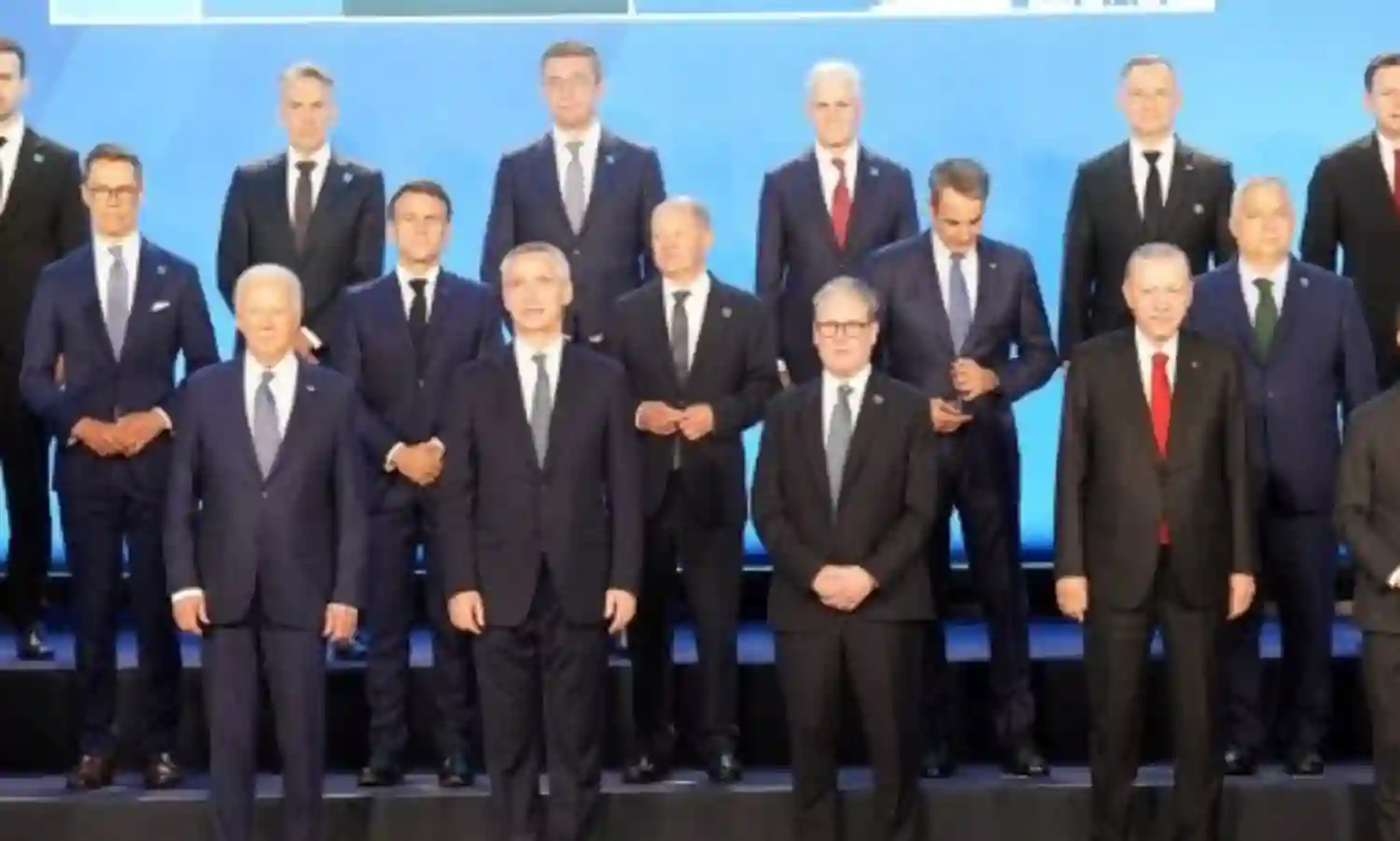NATO Is Outdated at 75, Principles For Coexistence Are Not
The North Atlantic Treaty Organization’s foundation is beyond repair

The West showed virtually no interest in the recent celebration of the 70th Anniversary of the Five Principles for Peaceful Coexistence in Beijing. These principles, created by India’s Jawaharlal Nehru and China’s Zhou Enlai, are enshrined in the Chinese Constitution and aim to promote peaceful, nonviolent relations among nations.
Not so NATO, which celebrated its 75th anniversary on July 9-11. If officially it too had five principles, they would be: 1) offensive deterrence, 2) forward ’defence,’ 3) nuclear weapons and the right to use them first; 4) expansion by adding ’partners’ not members plus out-of-area operations and, finally, 5) permanent violation of its own genuinely defensive treaty of 1949.
While NATO’s foundation is beyond repair, the Five Principles can be supplemented with military and civilian initiatives to benefit our future individual and global common security and a multipolar peace.
The Five Principles are as Gandhian as can be and can stand the test of Immanuel Kant: Would it be a better world if all countries applied these principles? The answer is ’Yes.’
The essential issue around them is how we seriously adhere to them when devising defence and security policies? For instance, if you have long-range missiles with huge destructive capacities, you signal that, if deterrence fails, you’re ready to ’interfere’ in the territories and affairs of others.
Furthermore, if you have nuclear weapons, you accept offensiveness; no people or country wants to use nukes on their own, only somebody else’s territory. The ’other’ will hardly find that compatible with peaceful coexistence even though you may argue that you have no offensive intentions.
The Five Principles are eminently compatible with nonviolence, individual and global common security, mediation, intelligent civilian conflict resolution, disarmament, and the UN Charter.
In contrast, NATO’s principles and policies have already proven outdated, counterproductive and violence-increasing. When you look at NATO countries’ warfare around the world, worldwide base systems and the war clouds hanging over Europe due to the NATO-Russia conflict that led to war in Ukraine, it is obvious that NATO has failed miserably in its promise to taxpayers and the wider world to create peace.
Neither intellectually, nor morally, can that failure be explained by projecting all the reasons onto Russia or anybody else. NATO is responsible for its policies, philosophy, and actions.
First, deterrence is like saying to the other side, ’Let’s talk’ while holding a pistol against her or his head. The head does not feel that safe with such a gesture. Talks without pistols are constructive. But if, for the sake of the argument, we accept that deterrence has some value, it must be defensive and not offensive.
One example of that is China’s Wall. It does not threaten anyone but deters invaders. If we combine that thinking with contemporary technology, we could ”trans-arm” to a new way of combining defensive military defence (shorter range and smaller destructive capacity) with lots of civilian tools such as early warning, mediation, peacekeeping, problem-solving and conflict resolution, reconciliation, etc. For that, the world needs peace academies, not only war academies.
Disarmament has never led to radical reduction because when people are told that offensive weapons offer security, they will be against reducing that security. Give them another, stronger defence, and they will likely be happy to switch to that.
Defencelessness is not a solution; the world needs more self-defence and less offensive capacity to secure peaceful coexistence.
The NATO’s second principle, US forward defence as close to Russia’s border as possible, is destabilising. NATO countries would never accept if Russia, China or others put their systems that close to them. Instead, we need buffer zones and non-alignment to avoid the fear that fuels arms races.
The third NATO principle is also indefensible. Since July 7, 2017, the world has had the UN-binding Nuclear Ban Treaty (TPNW), and no opinion poll has ever proven that humanity wants nuclearism. Since 1964, China has had a better nuclear No-First Use policy - which is the opposite of NATO’s policy to apply the First-Use principle even against a conventional attack.
However, the multipolar global future at peace still requires an orderly final abolition of weapons of mass destruction perhaps by tiny, reciprocated unilateral steps rather than negotiations.
Fourth, NATO’s expansion, out-of-area operations, and inclusion of ’partners’ instead of ’members’ in an attempt to go global represent a gross violation of its Treaty, which is a copy of the UN Charter with Art 5 added, which states that if one member is attacked from the outside, the others shall come to its rescue. Thus, NATO has nothing to do with non-members like Kosovo, Yugoslavia, Libya, Ukraine, etc.
It would have been natural to have closed down NATO when its only raison d’etre - the existence of the Soviet Union and its Warsaw Pact (established 6 years after NATO) - dissolved in 1989-90. Under US leadership, NATO’s Himalayan mistake was to exploit Russia’s momentary weakness and make expansion its only raison d’etre. It violated the well-documented promises to Michael Gorbachev that NATO would not expand ’one inch.’
Instead, it should, and could, have converted itself to a true peace organisation. The world must free resources and cannot continue to waste 400 times more on militarism than on the UN. The military is always a net burden on civilian economies.
The NATO may celebrate militarism, expansion, and unlawfulness and ignore the risks of self-destruction. The 85% majority world does not see peace and peaceful coexistence flowing out of NATO but looks for new ways of creating true peace.
Jan Oberg is Director of the Transnational Foundation for Peace & Future Research. Views expressed here are the writer’s own.



